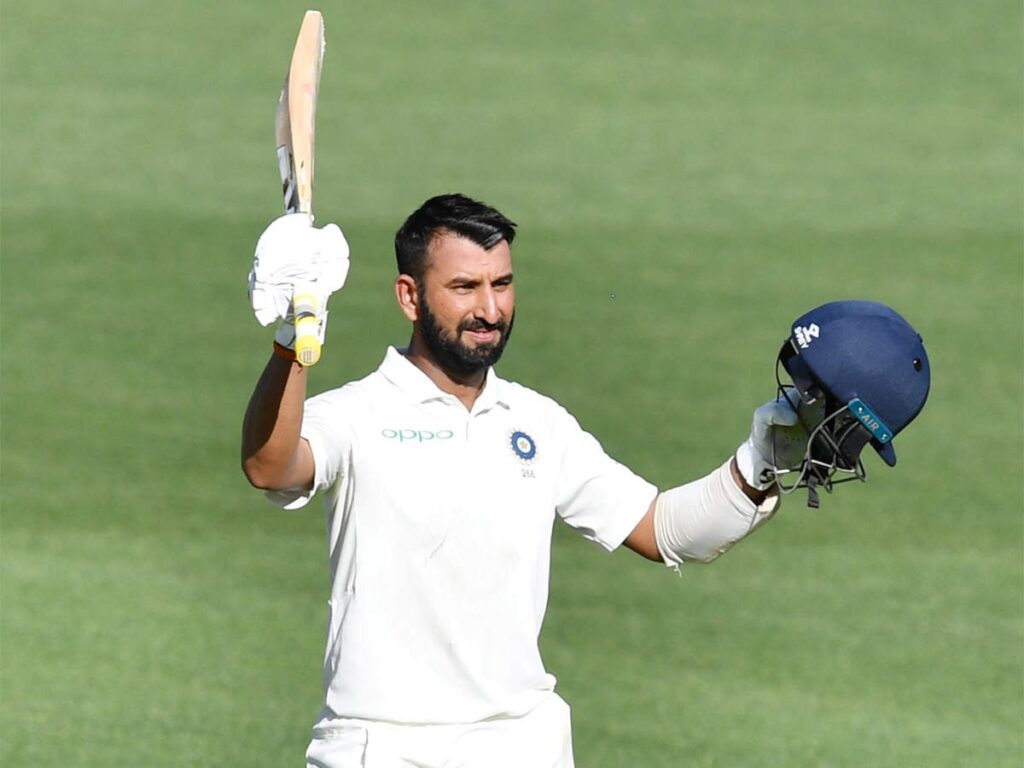
In the first Test against England at Edgbaston in Birmingham in 2018, India compromised on the solidity of Cheteshwar Pujara at No.3 to accommodate a fifth bowler. The team couldn’t chase 194 in the fourth innings. Kohli was stellar, but he had no support. This became the leitmotif of that tour, despite the odd contribution from Pujara and Ajinkya Rahane. Kohli stood out as the lone warrior with the bat. And despite a creditable bowling performance, India received a 1–4 series drubbing, raising questions about the team’s prospects in overseas conditions.
“We met at the end of the last Test in England, and Ravi [Shastri] asked everyone how it was that smart men continued to make the same mistakes,” reminisced Bharat Arun, then bowling coach of the team. While the bowling department looked settled, it was the batting that was worrisome. It couldn’t again be Kohli and Kohli alone in Australia in December 2018.
Enter Pujara. For years, Pujara had been the batting mainstay in Tests in home conditions. As MSK Prasad, former Chairman of Selectors, said, “He has this ability to go into a trance the moment he walks out to bat. Whatever you throw at him, he is unfazed. That’s what we needed from him in Australia.”
With the bowlers picking up wickets at regular intervals, all Kohli needed was a batsman who could hold the innings together. With 500 runs in the series, Pujara put his hand up. At the end of the series win, Shastri gushed: “Pujara proved that ten hours at the crease can be glamorous. You want someone to bat for your life? Pick this man!”
It has been said before, but the magic ingredient of success is often not star power but a kind of unrelenting intensity for days on end as a unit. Bowling fast and furious counts, no doubt, but it is batting with dogged determination and concentration in trying conditions that helps save and win Test matches overseas. Interestingly, for Pujara, India is back in England in June 2023. And this time around, there is no question of leaving him out, for the team knows how important he is to this batting line-up. But can he deliver against the ball that will move and bounce at The Oval? Can he stand up to the guile of Mitchell Starc and Pat Cummins, who will both fancy their chances in bowler-friendly conditions?
Pujara has already played loads of balls in his career, but if India are to win the WTC final, he will have to play another 200 balls in the Test match. And no one will ask him to score quickly. That’s not the priority on bowler-friendly wickets. All we will want is for Pujara to do what Pujara does. Show patience and bat. Take the shine off the new ball and make things easy for Kohli, Rahane and the rest of the batters. He will have to soak up the pressure, and make things happen for India. Be the punching bag if need be. For only then will the others look good.
Just like what Rahul Dravid did at Headingley in 2002. It was his century in the most difficult conditions that set up the mayhem that followed from Sachin Tendulkar and Sourav Ganguly, which allowed India to post a mammoth 628. Pujara will have to get into Dravid mode and bat like he did in 2002. If he can do so, there is enough reason to believe that Rohit Sharma will tick yet another box by beating Australia and winning India an ICC trophy for the first time in 10 years.
Clive Lloyd, one of the greatest captains the cricket world has ever seen, is also one of the best thinkers of the game. Sipping his wine at the Grand Hotel in London, he had once told me, “On difficult wickets, you need to bat ugly. That’s what you need to do, and also hope that you have the luck on your side. Let me tell you, it isn’t easy to bat in Test cricket against good bowling attacks. No way is it easy against the moving ball, and more so when a quality bowler is bowling at you.
“But as a batsman, you have to tell yourself that you will be patient, you will take blows on your body, you will be prepared to play and miss and yet not give your wicket away. The batsman may not be great to look at, but he will be hugely effective. That’s what you want from your best players, and that’s what you need to be successful in Test cricket in challenging conditions.”
He then added, “You always need one man to bat ugly to win a Test match. One man to just tell himself that come what may, I will not get out. It is a question of resolve and determination. Of courage and conviction. Cricket isn’t an easy sport, and at some venues, the conditions are as difficult as they can ever be. But that’s where you need to excel as a batsman to qualify as a great. This batsman might not be the highest scorer. He might not be the best to look at. He might not be your man of the match. But he will always be the glue around whom the others will revolve.”
Larry Gomes was that man in Lloyd’s team. We know who this batsman is for India. Away from the hustle of the IPL, he has yet again readied himself for this role. It is Pujara time. Against a team that he loves to take on.



